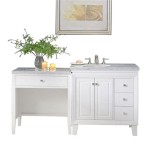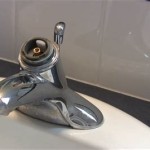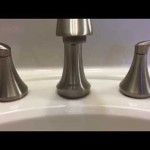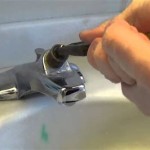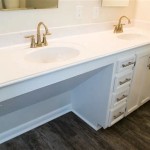Bathroom Design Ideas With Freestanding Tub
Freestanding tubs have become a highly sought-after feature in modern bathroom designs, representing a departure from the traditional built-in tub. Their aesthetic appeal lies in their sculptural nature and ability to serve as a focal point within the space. Beyond aesthetics, freestanding tubs offer flexibility in placement and contribute to an overall sense of spaciousness and luxury. This article explores various design ideas incorporating freestanding tubs, examining considerations for space planning, material selection, and complementary fixtures.
Space Planning and Tub Placement
Effective space planning is paramount when integrating a freestanding tub into a bathroom design. Unlike built-in tubs, freestanding models require clearance on all sides, impacting the overall layout and traffic flow. The size of the bathroom is a primary determinant of the tub's suitability. In smaller bathrooms, careful consideration should be given to minimizing visual clutter and maximizing open space to avoid a cramped feeling. This may involve choosing a smaller tub model or opting for a corner placement to optimize the available area.
In larger bathrooms, the placement options become more diverse. The tub can be positioned centrally, serving as a dramatic focal point. Alternatively, it can be placed near a window to take advantage of natural light and views, creating a spa-like atmosphere. Another approach is to create a designated bathing zone, perhaps within a tiled enclosure or on a raised platform, further emphasizing the tub's presence.
Consideration must be given to plumbing access. While freestanding tubs offer visual flexibility, they require concealed plumbing for water supply and drainage. This may necessitate modifications to the existing floor structure or the installation of a dedicated access panel for maintenance. Thorough planning during the initial design phase is crucial to avoid costly alterations later.
The surrounding floor material should also be considered. Materials that are slip-resistant and water-resistant are ideal, such as tile, stone, or sealed concrete. Ensuring adequate drainage around the tub is essential to prevent water damage and maintain a safe environment.
Material Selection and Style Considerations
The material of the freestanding tub significantly impacts its aesthetic and functional characteristics. Acrylic tubs are a popular choice due to their affordability, lightweight nature, and heat-retention properties. Cast iron tubs offer superior durability and heat retention, but they are significantly heavier and require a reinforced floor. Copper tubs provide a unique and luxurious aesthetic, but they require specialized maintenance to prevent tarnishing.
The style of the tub should complement the overall bathroom design. For modern bathrooms, sleek, minimalist tubs with clean lines and geometric shapes are appropriate. In traditional bathrooms, clawfoot tubs or tubs with ornate detailing can enhance the classic aesthetic. Transitional bathrooms may benefit from tubs with a balance of modern and traditional elements, such as a simple silhouette with a pedestal base.
The color of the tub should also be carefully considered. White tubs are a classic choice that works well in a variety of bathroom styles. However, bolder colors or metallic finishes can add personality and visual interest. Coordinating the tub's color with other bathroom fixtures and accessories can create a cohesive and harmonious design.
Beyond the tub's primary material, consider the faucet finish and style. Chrome, brushed nickel, and oil-rubbed bronze are common options. The faucet should be chosen to complement the tub's overall design and the bathroom's hardware. Freestanding faucets are typically used with freestanding tubs, adding to the sculptural quality of the bathing area.
Complementary Fixtures and Accessories
A freestanding tub rarely exists in isolation. Its impact is amplified by the surrounding fixtures and accessories. Thoughtful integration of these elements is essential for creating a well-designed and functional bathroom.
Shower enclosures or separate showers are often paired with freestanding tubs. This allows for both a relaxing soak and a quick shower option. The shower enclosure should be designed to complement the tub's style and not detract from its presence. Glass enclosures are a popular choice, as they allow natural light to flow freely and maintain a sense of openness.
Vanities and sinks should be chosen to complement the tub's style and finish. Wall-mounted vanities can create a sense of spaciousness, while traditional vanities with cabinetry offer ample storage. The countertop material should be durable and water-resistant, such as granite, quartz, or marble.
Lighting plays a crucial role in creating the desired ambiance. Recessed lighting can provide general illumination, while sconces and pendant lights can add task lighting and visual interest. Dimmable lighting allows for adjusting the brightness to create a relaxing atmosphere during a bath. Consider incorporating lighting features that highlight the tub's sculptural form.
Accessories such as towels, bath mats, and decorative items can add personality and warmth to the bathroom. Choose accessories that complement the tub's style and color palette. A small side table near the tub can provide a convenient place to set down drinks or reading material. Plants can also add a touch of nature and create a spa-like atmosphere.
Storage is another important consideration. While freestanding tubs offer visual appeal, they often lack built-in storage. Consider incorporating storage solutions such as shelving, wall-mounted cabinets, or storage benches to keep the bathroom organized and clutter-free.
Integrating smart home technology can further enhance the bathing experience. Digital shower controls allow for precise temperature and water flow adjustments. Integrated sound systems can provide music or ambient sounds during a bath. Smart lighting systems can be programmed to create different moods and atmospheres.
The selection of the appropriate tile can also significantly affect bathroom design. Large format tiles can visually enlarge the space, and using neutral colors can create a relaxing and calm environment. Utilizing different textures on the walls and floors can add depth and interest to the design, without overpowering the space.
Window treatments are also a key to consider. Blinds, shades, or curtains can provide privacy and control the amount of natural light entering the bathroom. Roman shades or sheer curtains can add a touch of elegance.
Attention to detail is crucial in bathroom design. The choice of artwork, mirrors, and other decorative elements can elevate the space and create a cohesive and stylish look. By carefully considering all of these elements, it is possible to create a bathroom with a freestanding tub that is both beautiful and functional.

11 Freestanding Tub Next To Shower Design Ideas Luxury Tubs

Bathroom Freestanding Tubs Design Photos And Ideas Dwell

Freestanding Pedestal Bathtubs

38 Amazing Freestanding Tubs For A Bathroom Spa Sanctuary Remodel Master Free Standing Bath Tub Design

Freestanding Pedestal Bathtubs

25 Terrific Transitional Bathroom Designs That Can Fit In Any Home Design Small Remodel Modern Farmhouse

Freestanding Vs Built In Bathtubs Pros And Cons

10 Bathtub Ideas That Will Make You Never Want To Leave Home Heather Hungeling Design

Freestanding Bathtub Design Ideas That Will Work In Any Bathroom 14 Photos Decoist

Bathroom Freestanding Tubs Design Photos And Ideas Dwell
Related Posts
